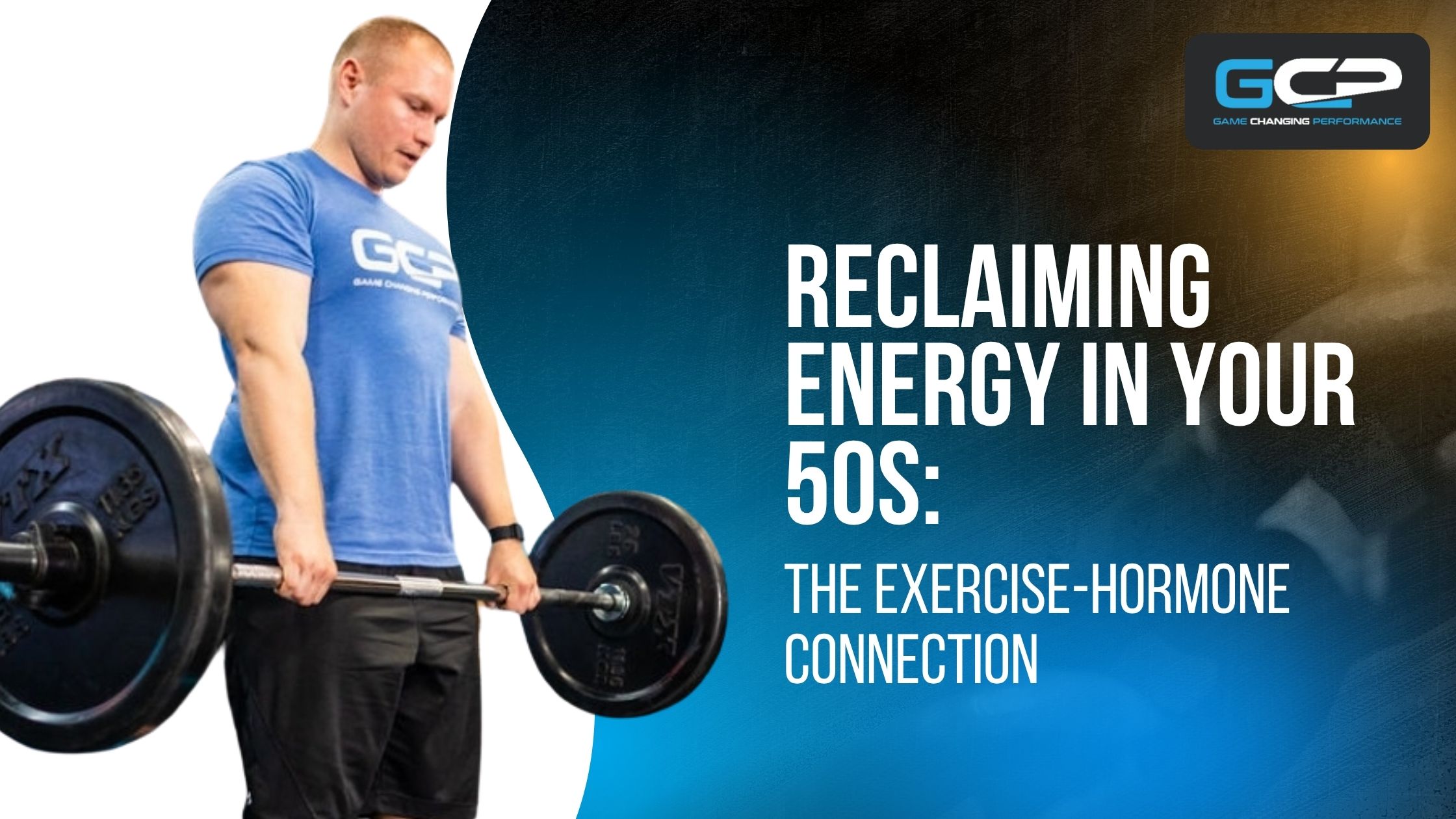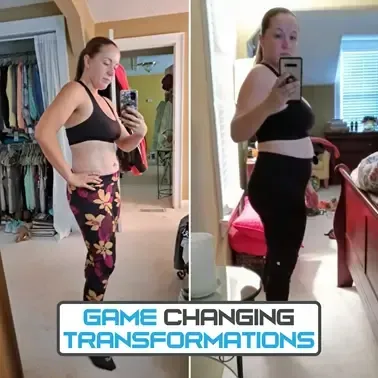FITNESS AND WEIGHT LOSS BLOG

10 Ways Exercise and Hormones After 50 Boost Your Energy
Reclaiming Energy in Your 50s: The Exercise-Hormone Connection
I never thought I’d share this, but here we go… You might have done the same thing I did: put on a brave face while feeling completely drained inside. Maybe your mornings feel heavier than they used to, your energy dips faster, and those unpredictable hormone swings make you wonder what’s really going on. You push through the days, convincing yourself it’s just part of getting older, but deep down, you know something’s off. That nagging feeling that your spark is fading isn’t in your head; it’s your body’s way of telling you it needs a reset.
That’s exactly how I felt until I discovered how exercise and hormones after 50 are deeply connected. It wasn’t just about lifting weights or breaking a sweat; it was about understanding how the right movement could actually restore my body’s balance from the inside out. This changed everything for me at Game Changing Performance, and it can for you, too. Once you realize that fitness isn’t fighting your hormones but fueling them, your energy, mood, and confidence begin to return faster than you ever thought possible.
Why Energy Fades After 50 (& How Exercises Can Fix It?)
Your 50s aren’t the end of your energy story; they’re the start of a new chapter where strength, confidence, and vitality can return stronger than ever. This stage of life isn’t about slowing down; it’s about tuning in to what your body truly needs. Over time, aging and energy levels begin to shift as hormone changes quietly influence how you feel, sleep, and recover. You might notice mornings feel heavier, stress hits harder, or workouts take longer to bounce back from. These shifts aren’t a sign of failure; they’re your body’s natural way of asking for a smarter approach. And that’s where the magic happens, because exercise and hormones after 50 work hand in hand to reignite your internal rhythm, rebuild balance, and bring your spark back to life. When you move with intention, train consistently, and give your body the right kind of care, energy stops being something you chase; it becomes part of who you are again.
1. The Deep Link: Why Exercise Influences Hormone Balance After 50
There’s one detail that changed the entire story: your hormones respond to movement like music responds to rhythm. The more consistent the beat, the more alive you feel.
How Hormones Shift with Age
Testosterone gradually drops 1–2% yearly in men, while women experience shifts in estrogen and progesterone during menopause.
Muscle mass declines up to 8% per decade after 30, accelerating after 50.
Many adults over 55 aren’t meeting resistance training guidelines, leaving hormones unchallenged.
Why Exercise Matters for Hormone Health
Resistance training creates powerful endocrine adaptations that slow down aging.
Regular workouts lower cortisol, the stress hormone, and support a natural energy boost after 50.
Physical activity directly improves metabolism and hormones over 50, promoting better energy flow.
When it comes to exercise and hormones after 50, the science is clear: motion fuels balance, and balance fuels life.
2. Top 8 Workouts to Boost Hormones Over 50
Fast forward to today, and things look very different. The right workouts can completely reshape how your body handles hormones and energy.
2.1 Resistance Training for Vitality
Include squats, push-ups, and rows.
Build strength, bone density, and testosterone balance.
2.2 HIIT (High-Intensity Interval Training)
Quick bursts, short rests.
Boosts growth hormone and metabolism, and hormones over 50.
2.3 Steady Aerobic Sessions
Walk, swim, or cycle 20–30 minutes.
Improves cortisol and stress management, promoting sleep quality improvement.
2.4 Mind-Body Training
Yoga, Pilates, and Tai Chi.
Perfect for menopause and exercise benefits and endorphins, and mood boosts.
2.5 Strength & Balance Focus
Step-ups, lunges, and single-leg work.
Builds strength training for vitality and an active lifestyle after 50.
2.6 Recovery Workouts
Stretching, foam rolling, and gentle mobility.
Crucial for exercise recovery after 50 and long-term energy sustainability.
2.7 Women & Strength
Especially key for hormone balance after 50 and fitness for energy over 50.
Post-menopausal training reduces bone loss and improves mood.
2.8 Social or Group Training
Shared energy lifts adherence and emotional health.
A true holistic wellness approach for staying consistent.
3. Quick Comparison: Workout Types and Hormone Impact
Sometimes, seeing it side-by-side makes all the difference. Here’s how each training type helps support your hormones and vitality after 50.
1. Exercise Type
Resistance training
HIIT
Aerobic
Mind-Body
2.Hormonal/Metabolic Impact
Boosts testosterone and strength
Improves metabolism and growth hormone
Lowers cortisol, enhances sleep
Improves mood, balance, and flexibility
3.Best For
Testosterone and strength training
Fitness for energy over 50
Natural energy boost after 50
Menopause and exercise benefits
4. Weekly Blueprint for Hormone-Friendly Fitness
Let’s bring it all together into a realistic, balanced schedule that fits your life and supports hormone health every week.
Monday: Strength training (legs + core)
Tuesday: 30-minute brisk walk
Wednesday: Yoga or Pilates
Thursday: Upper-body resistance work
Friday: 20-minute HIIT session
Saturday: Stretching, foam rolling, or light play activity
Sunday: Rest, reflection, or family walk
Consistency matters more than perfection. With time, exercise, and hormones after 50 start working in sync, your metabolism gets steadier, and energy becomes sustainable.
5. How Hormones Respond to Training (The Science Bit)
You won’t believe what I realized halfway through my fitness journey: each workout sends signals to your endocrine system like coded messages.
Cortisol: drops after consistent workouts and good sleep.
Growth Hormone: spikes during resistance and HIIT workouts.
Testosterone: rises with multi-joint strength moves.
Estrogen/Progesterone: balanced through moderate intensity and strength.
Endorphins: deliver mood and energy highs.
Every repetition is a message to your hormones: “Wake up, rebuild, rebalance.” Each controlled movement becomes a conversation between your muscles and your metabolism, reminding your system to realign, recharge, and rebalance naturally.
6. Common Mistakes That Drain Hormone Health After 50

Let’s be honest, some of us think “more is better,” but with hormones, balance wins every time. But when it comes to hormones, the real secret isn’t overworking your body; it’s finding the balance that allows your system to thrive every time.
Overtraining increases cortisol and fatigue.
Ignoring recovery disrupts hormone balance after 50.
Skipping resistance work slows metabolism and hormones over 50.
Poor sleep cancels exercise benefits.
Neglecting nutrition starves your hormonal system.
Avoid these traps, and your fitness routines for hormone health will pay off faster. When you do, your fitness routines for hormone health will start delivering results faster, helping your body respond, recover, and rejuvenate naturally.
7. Simple Lifestyle Tweaks That Supercharge Results
You can’t out-train a tired lifestyle. Hormones respond best to a 360° wellness approach. One that balances movement, nutrition, rest, and mindset together.
Prioritize sleep quality improvement, 7-8 hours nightly.
Eat enough protein and healthy fats.
Stay hydrated; even mild dehydration can impact cortisol levels.
Manage stress through breathwork or meditation.
Keep an active lifestyle after 50; movement throughout your day matters.
Small actions support a holistic wellness approach and reinforce your mind-body connection in fitness.
8. Real-Life Story: How One Client Got His Energy Back
Most people don’t know this part of the story. At 52, Mike joined Game Changing Performance, feeling drained and heavy. He started small, with two workouts weekly and short walks. Within 8 weeks, he reported better sleep, improved focus, and felt his “fire” return.
By month 4, his bloodwork showed higher free testosterone and lower resting cortisol. His wife said he looked 10 years younger, and the only change was sticking to exercise and hormones after 50 years of training.
9. Key Benefits You’ll Feel
Here’s what you can expect when hormones and movement start syncing again. This is where real transformation starts, where energy, strength, and balance all come back into harmony.
Steadier mood, sharper focus, endorphins, and a mood boost.
Sustainable natural energy boost after 50.
Stronger metabolism and hormone balance after 50.
Healthier sleep cycles and faster exercise recovery after 50.
A life powered by long-term energy sustainability.
10. Mindset Mastery: The Hidden Hormone Booster
Your body mirrors your mind; when your mindset shifts, your hormones follow. A positive outlook reduces stress hormones like cortisol and boosts feel-good ones like serotonin and dopamine. When you train with confidence and self-compassion, your workouts become more effective, recovery improves, and your energy stays steady. Simply put, a strong mindset is the secret hormone booster you can’t skip.
Conclusion
If you’ve ever felt like giving up, here’s your rescue: your body isn’t broken; it’s just waiting for the right reset. The connection between exercise and hormones after 50 is more than science; it’s the key to reclaiming your energy, improving your mood, and feeling strong again. At Game Changing Performance, we’ve seen people go from sluggish and frustrated to vibrant and full of life by rebuilding hormone balance through focused movement, recovery, and mindset.
You don’t need to settle for low energy or fading motivation; your 50s can be your comeback decade when you train smarter, not harder. Let your hormones and workouts work together, and you’ll feel that natural spark return stronger than ever. Are you ready to take control of your hormones, energy, and strength? Join us right away.
Your next level of vitality starts now!
Frequently Asked Questions
Q 1: Does strength training improve testosterone levels?
Yes, resistance training enhances testosterone and strength training response, especially when done 2–3 times weekly.
Q 2: How does exercise help with menopause symptoms?
Exercise balances hormones, reduces stress, and supports bone and mood health.
Q 3: Can fitness reduce cortisol and stress in older adults?
Absolutely, movement lowers cortisol and improves overall vitality.
Q 4: Is cardio or strength training better for energy after 50?
Both! A blend of resistance, HIIT, and cardio yields optimal hormone balance.
Q 5: How long until I feel more energy?
Most notice benefits in 4–6 weeks with consistent training.
Q 6: How does Game Changing Performance support hormone health?
Through customized fitness routines for hormone health, recovery guidance, and a holistic wellness approach focused on exercise and hormones after 50.
START YOUR TRANSFORMATION TODAY



